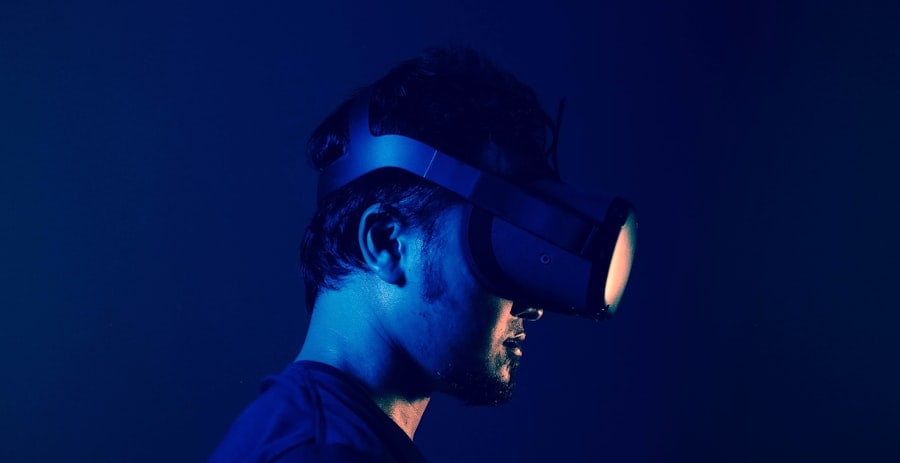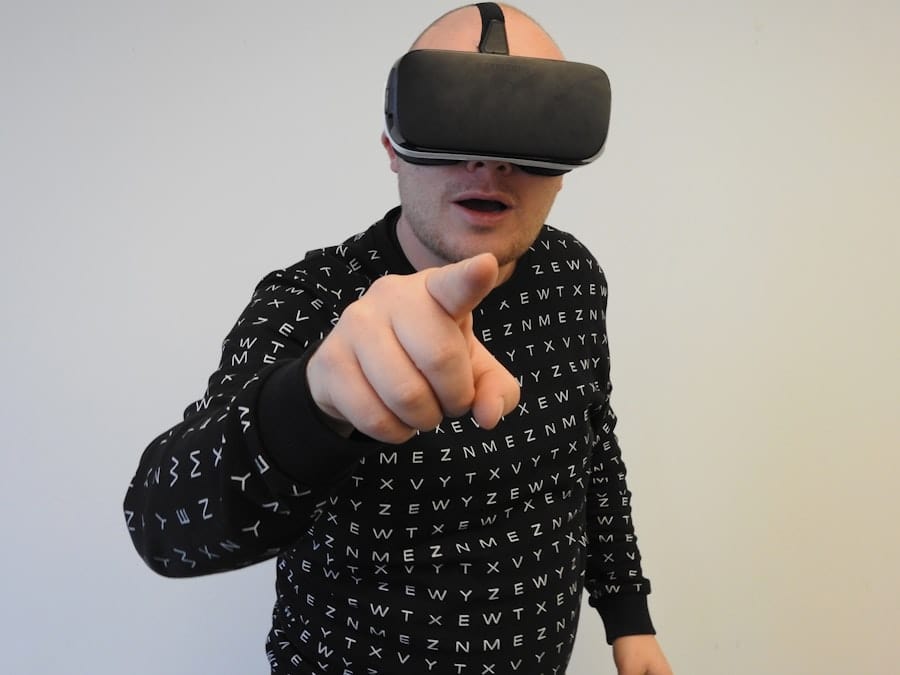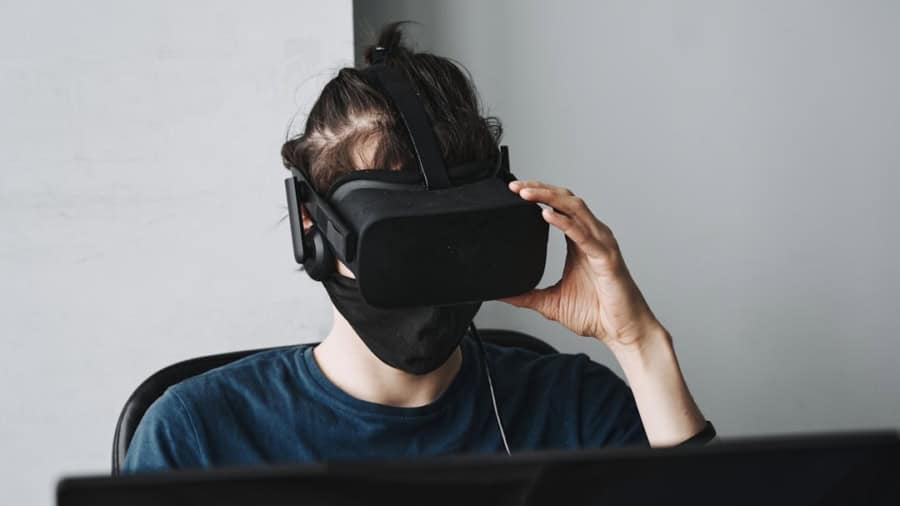Virtual Reality (VR) has emerged as a transformative technology that reshapes how narratives are constructed and experienced. Unlike traditional storytelling mediums such as books, films, or even video games, VR immerses the audience in a three-dimensional environment where they can interact with the story in real-time. This level of engagement allows for a more profound emotional connection between the audience and the narrative, as users are not merely passive observers but active participants in the unfolding drama.
The essence of immersive storytelling lies in its ability to transport individuals into alternate realities, enabling them to experience stories from unique perspectives. The evolution of VR technology has been rapid, with advancements in hardware and software making it increasingly accessible to creators and consumers alike. High-definition displays, motion tracking, and haptic feedback systems have all contributed to creating a more convincing and engaging virtual environment.
As a result, storytellers are now exploring innovative ways to leverage these capabilities, crafting experiences that challenge conventional narrative structures. The intersection of VR and storytelling opens up new avenues for creativity, allowing for narratives that can adapt based on user choices and interactions, thus creating a personalized experience that resonates on a deeper level.
Key Takeaways
- VR and immersive storytelling offer a new way to engage audiences and create more immersive experiences.
- VR has the potential to revolutionize storytelling by allowing users to become active participants in the narrative.
- Advantages of using VR in storytelling include the ability to create a sense of presence, empathy, and emotional connection with the audience.
- Challenges and limitations of VR in storytelling include technical constraints, high production costs, and the need for specialized skills.
- Successful VR storytelling experiences include “The Blue” by Wevr, “Dear Angelica” by Oculus Story Studio, and “Pearl” by Google Spotlight Stories.
The Impact of VR on Storytelling
The impact of VR on storytelling is profound, fundamentally altering how narratives are constructed and consumed. Traditional storytelling often relies on linear progression, where the audience follows a predetermined path. In contrast, VR allows for non-linear narratives that can change based on user interactions.
This shift not only enhances engagement but also empowers users to explore different facets of a story at their own pace. For instance, in a VR experience, a user might choose to follow one character’s journey over another, leading to varied outcomes and insights into the narrative’s themes. Moreover, VR storytelling fosters a sense of presence that is unparalleled in other mediums.
When users don a VR headset, they are transported into the story world, experiencing it as if they were physically present. This immersion can evoke strong emotional responses, making moments of tension or joy feel more intense. Research has shown that immersive experiences can lead to greater empathy and understanding of different perspectives.
For example, VR experiences that place users in the shoes of marginalized communities can foster awareness and compassion in ways that traditional media may struggle to achieve.
Advantages of Using VR in Creating Immersive Storytelling Experiences

One of the most significant advantages of using VR in storytelling is the heightened sense of agency it provides to users. In traditional narratives, audiences often have little control over the direction of the story. However, VR allows users to make choices that influence the narrative’s outcome.
This interactivity not only enhances engagement but also encourages users to invest emotionally in the story. For instance, in a VR experience where users must make moral decisions that affect character fates, the stakes feel much higher than in a passive viewing scenario. Additionally, VR can create multi-sensory experiences that deepen immersion.
By incorporating sound design, spatial audio, and even tactile feedback through haptic devices, creators can craft environments that engage multiple senses simultaneously. This multi-sensory approach can enhance storytelling by making environments feel more alive and responsive. For example, a horror VR experience might use sound cues to build tension while simultaneously allowing users to feel vibrations that mimic footsteps behind them, amplifying the overall sense of dread.
Challenges and Limitations of VR in Storytelling
Despite its many advantages, VR storytelling is not without its challenges and limitations. One significant hurdle is the technological barrier that still exists for many potential users. While VR headsets have become more affordable over time, they still require a certain level of investment and technical know-how to set up and use effectively.
This limitation can restrict access to immersive storytelling experiences, particularly among demographics that may not have the resources or inclination to engage with new technology. Moreover, creating compelling VR narratives requires a different skill set than traditional storytelling methods. Writers and directors must consider spatial awareness and user agency when crafting their stories.
This complexity can lead to challenges in pacing and narrative coherence, as creators must balance user freedom with a structured storyline. Additionally, there is the risk of overwhelming users with too many choices or information, which can detract from the overall experience. Striking the right balance between interactivity and narrative flow remains a critical challenge for creators venturing into this medium.
Examples of Successful VR Storytelling Experiences
Several successful VR storytelling experiences have demonstrated the potential of this medium to captivate audiences. One notable example is “The Invisible Man,” an immersive experience created by the production company “The Other Guys.” In this narrative-driven piece, users step into the shoes of a character who is being stalked by an unseen entity. The experience utilizes spatial audio and environmental cues to create an atmosphere of suspense and fear, allowing users to feel the weight of their decisions as they navigate through the story.
Another exemplary case is “Wolves in the Walls,” based on Neil Gaiman’s children’s book. This interactive experience allows users to explore a richly detailed environment while interacting with characters and objects within the story world. The narrative adapts based on user choices, creating a unique experience for each participant.
The combination of stunning visuals, engaging storytelling, and interactivity showcases how VR can elevate narrative experiences beyond traditional formats.
The Future of VR in Storytelling

The future of VR in storytelling appears promising as technology continues to evolve and become more integrated into everyday life. As hardware becomes more sophisticated and affordable, we can expect an increase in both creators and audiences engaging with immersive narratives. Innovations such as eye-tracking technology and improved motion capture will likely enhance user interaction within virtual environments, allowing for even more nuanced storytelling techniques.
Furthermore, as industries such as education, therapy, and tourism begin to adopt VR for their own purposes, storytelling will likely expand beyond entertainment into these realms. For instance, educational institutions may use VR to create immersive historical experiences where students can “walk” through ancient civilizations or witness pivotal moments in history firsthand. This cross-pollination of industries could lead to new forms of storytelling that blend entertainment with education or social impact.
Tips for Creating Compelling VR Storytelling Experiences
Creating compelling VR storytelling experiences requires careful consideration of several factors that distinguish this medium from traditional forms of narrative. First and foremost, understanding user agency is crucial; creators should design experiences that allow users to make meaningful choices without overwhelming them with options. A well-structured branching narrative can provide users with a sense of control while still guiding them through essential plot points.
Additionally, attention to detail in world-building is vital for immersion. The environment should feel alive and responsive; incorporating ambient sounds and interactive elements can enhance this effect significantly. Creators should also consider pacing carefully; moments of tension should be balanced with quieter scenes that allow users to reflect on their choices and the story’s implications.
Finally, testing with diverse audiences can provide valuable feedback on how different users interact with the narrative, helping creators refine their approach.
The Ethical Considerations of VR in Storytelling
As with any powerful medium, ethical considerations play a significant role in the development of VR storytelling experiences. One primary concern is the potential for manipulation; because VR can evoke strong emotional responses, creators must be mindful of how they craft narratives that may exploit these feelings for commercial gain or sensationalism. Ensuring that stories are respectful and do not perpetuate harmful stereotypes or narratives is essential for responsible storytelling.
Moreover, issues surrounding consent become particularly relevant in immersive environments where users may be placed in uncomfortable or distressing situations. Creators should prioritize user comfort by providing clear content warnings and options for users to opt-out or disengage if they feel overwhelmed. As VR continues to evolve as a storytelling medium, establishing ethical guidelines will be crucial for fostering trust between creators and audiences while ensuring that immersive experiences remain safe and respectful spaces for exploration and engagement.
In a recent article on enicomp.com, the top trends in digital marketing for 2023 were discussed, highlighting the importance of immersive storytelling experiences in engaging audiences. This ties in perfectly with the role of VR in creating immersive storytelling experiences, as discussed in the original article. By leveraging technologies like NeuronWriter SEO NLP optimization, content creators can enhance their storytelling capabilities and deliver more impactful narratives through virtual reality. These trends in digital marketing are shaping the way we consume content and interact with brands, emphasizing the need for innovative approaches to storytelling in the digital age.
FAQs
What is VR?
VR stands for virtual reality, which is a computer-generated simulation of an environment that can be interacted with in a seemingly real or physical way by a person using special electronic equipment, such as a helmet with a screen inside or gloves fitted with sensors.
How does VR create immersive storytelling experiences?
VR creates immersive storytelling experiences by allowing users to feel like they are physically present in a different environment. This can be achieved through the use of 360-degree videos, interactive storytelling, and realistic graphics and sound effects.
What role does VR play in storytelling?
VR plays a significant role in storytelling by providing a unique and immersive way for audiences to experience narratives. It allows for a more engaging and interactive form of storytelling, where users can become active participants in the story rather than passive observers.
What are some examples of VR storytelling experiences?
Some examples of VR storytelling experiences include interactive VR games, immersive VR films, virtual tours of historical or fictional locations, and educational simulations that allow users to explore different environments and scenarios.
What are the benefits of using VR for storytelling?
The benefits of using VR for storytelling include increased engagement and immersion, the ability to create unique and memorable experiences, and the potential to reach new audiences who are interested in cutting-edge technology and interactive narratives.

